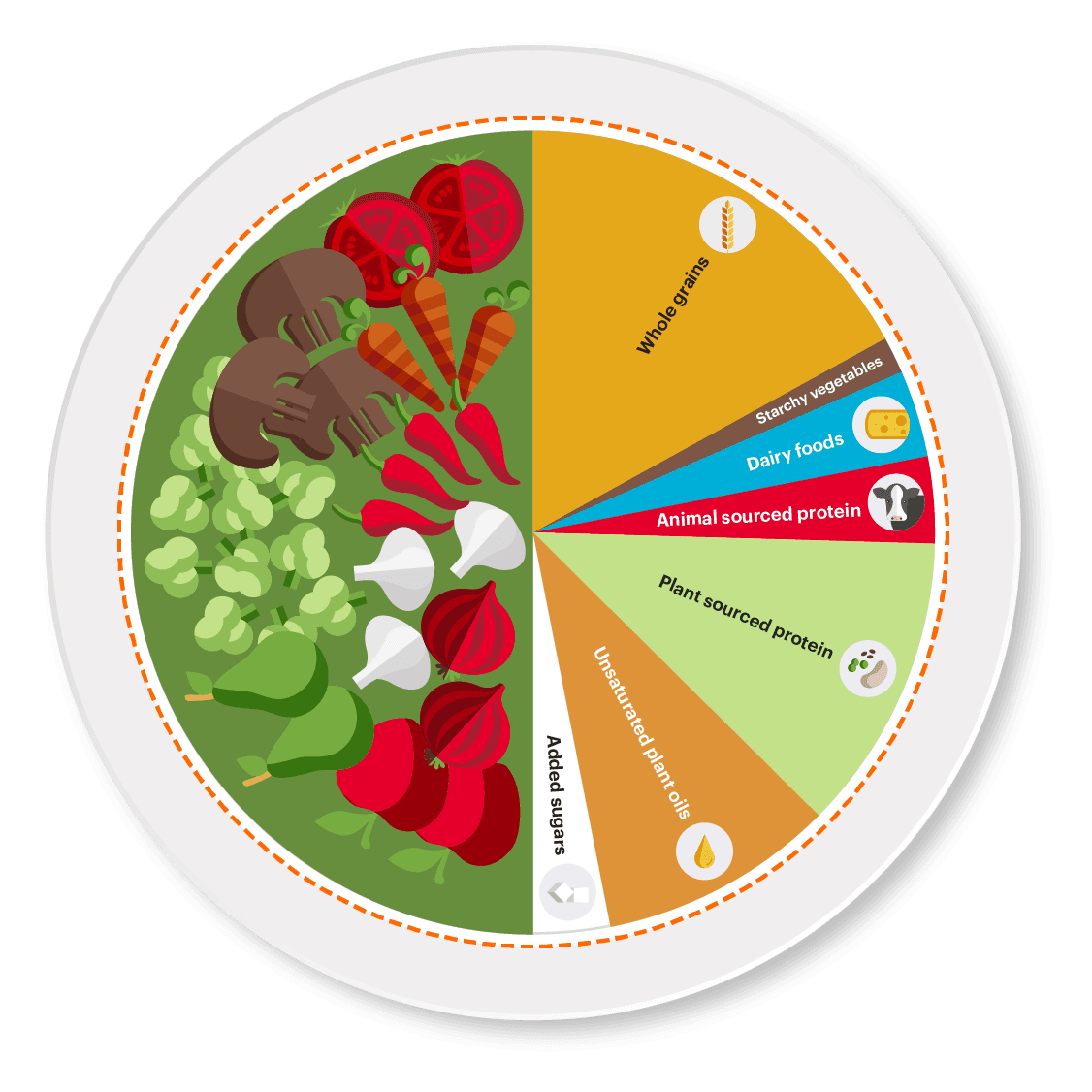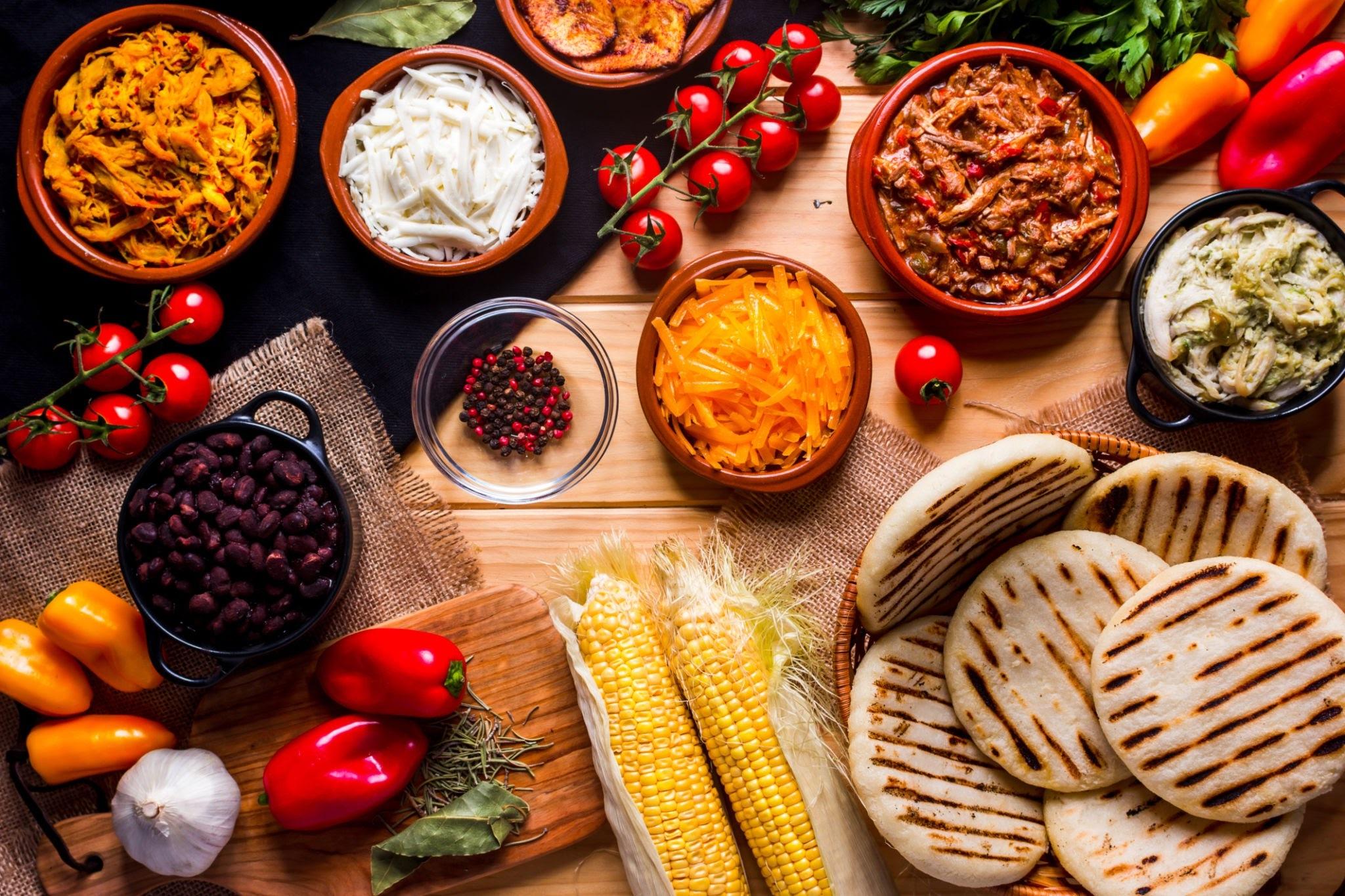Diets for the Climate: How to eat healthy and in line with the Planet's Boundaries
To slowly bring our common journey through the jungle of sustainable nutrition to an end, we would like to give you an additional portion of practical tools. Before that, here's a quick review of the most important information from previous blog posts.
💡 26% of global emissions are from food production of which 53% are emitted for the production of meat and animal products (Including feed production & grazing land)
💡 77% of agricultural land used is for grazing and for growing livestock feed.
💡 Approximately 1.3 billion tons of food is thrown away annually. This would be enough to feed almost half the global population.
💡 Around ⅓ of food is thrown away worldwide. In Germany, that's around 18 million tons of food per year. Reducing food waste is thus among the most effective ways to save CO₂.
💡 8% of CO₂ emissions in the transport of food, with the rest coming from production.
💡 Animal products have the worst CO₂ balance, but other products also harm the climate, such as rice, coffee, flown-in vegetables, and fruit.
💡 Eating seasonally and locally helps reduce the CO₂ footprint of our diets, and even frozen or freeze-dried products often have a lower CO₂ footprint.

These were some overwhelming information, right? Let's take a look at some more solutions to these problems. Several diets have been established that make it easier for all of us to adapt to the planet’s limited resources. The offer in our supermarkets is also growing steadily and several companies are working hard to provide us with alternative nutrition products. The following list of diets is of course not complete, but we present you the most important for sustainability.
Flexitarianism
Flexitarians do not exclude meat consumption but reduce it significantly. Maybe meat comes on the plate only when you go out for a fancy meal, on special occasions or when there are no alternative choices. Many people purposefully schedule meat meals for once a week, once a month, or twice a year. Importantly, any reduction in the consumption of animal products is valuable for the climate!
"Importantly, any reduction in the consumption of animal products is valuable for the climate."
Pescetarianism
Pescetarians abstain from meat but not from fish. Fish has a much smaller CO₂ footprint than meat. Nevertheless, fish still has a big impact on CO₂ emissions, our environment, and wildlife. Take a look at the documentary Seaspiracy.
Vegetarianism
Vegetarians abstain from all meat and fish products. Dairy and egg products are the only traces left of animal origin. A vegetarian diet reduces the individual CO₂ footprint by a whopping 350 kg per year.
Veganism
Now comes the supreme discipline. Around one million vegans in Germany do without any kind of animal products. With this diet, you reduce your CO₂ footprint by a whole two tons a year. This is not only good for the climate, but also for animals. Vegans send a direct signal to the current factory farming and demonstrate the relevance of animal welfare and animal rights. Because not only the meat production is cruel for the animals, but also the milk and egg production.
"With this diet, you reduce your CO₂ footprint by a whole two tons a year."
Planetary Health Diet
Not enough fish, meat, dairy, and egg for you? A little of it is even compatible with the climate. The experts of the EAT-Lancet Commission have developed a healthy and sustainable strategy to feed the world's population in 2050. And all of this can be achieved without over-exploiting the planet. In order to prevent global problems such as civilization diseases, famine, and global warming, mankind as a whole must reduce the consumption of red meat and sugar by half and increase the proportion of vegetables. The consumption of fruits, nuts, and legumes should also be increased.

Source: EAT Forum about the Planetary Health Diet (https://eatforum.org/learn-and-discover/the-planetary-health-diet/)
🥦 All legumes are very rich in protein, such as lentils (with up to 12 g of protein per 100 g), beans (up to 9 g of protein per 100 g), and kidney beans. Chickpeas (up to 9 g protein per 100 g) are even characterized by a high content of essential amino acids.
🥦 Broccoli (up to 3 g protein per 100 g) is not only high in protein but also low in calories and rich in vitamins C and K. Spinach also contains a lot of protein.
🥦 Mushrooms are very rich in protein. Therefore, also need to be consumed directly and fresh.
🥦 Cereals and pseudocereals, i.e. amaranth, buckwheat, and quinoa, are good sources of protein. Quinoa, for example, contains up to 4.4 g of protein per 100 g. Oatmeal (with up to 13 g of protein per 100 g) also contains a lot of protein and also provides important minerals and vitamins. Since quinoa comes from the Andes in South America, it has some CO₂ under its belt. As an alternative, you can replace it with local millet. Be sure to pay attention to where the millet comes from.
🥦 Nuts and seeds (up to 22 g protein per 100 g) are delicious and can also be snacked on in between meals. Almonds, by the way, are tops in terms of protein content.
🥦 There are also processed plant foods that are wonderful sources of protein. Seitan (up to 28 g protein per 100 g) is at the forefront of vegan protein sources. At the same time, the meat substitute made from wheat protein (gluten) is particularly versatile.
🥦 Tempeh (up to 20 g protein per 100 g) is made from soy, similar to tofu. However, the whole soybean is processed and not just soy milk.
🥦 Tofu (up to 18 g protein per 100 g) is now available in all imaginable variations. As a general rule, solid tofu varieties are higher in protein.
However, important amino acids and minerals, and vitamins must also be added to the proteins. A helpful rule of thumb: A combination of legumes + cereals or pseudocereals in a meal is the ideal combination so that the body can absorb the proteins well.

Are superfoods really super?
Superfoods are incredibly trendy and are supposed to help us with many problems: Lower blood pressure, make us slim, give us energy, and much more. So far, unfortunately, few of these promises can be scientifically proven. And what about the CO₂ footprint of these superfoods? Most superfoods come from far away, flown in from South America or Asia. The goji berry, for example, comes from China, chia seeds from Mexico, and acai berry from the Amazon of Brazil. There are also regional alternatives.
"So far, unfortunately, few of these promises can be scientifically proven."
It is better to fall back on domestic superfood alternatives: Flaxseed, blueberries, or broccoli, for example. Black currants, blueberries, and red cabbage can wonderfully replace the exotic acai berry. Instead of hemp seeds, walnuts, sunflower seeds, lentils, and oatmeal do just as well. Matcha tea differs from conventional green tea only in that it is obtained from the entire leaf. Long story short: Superfoods are not that super. According to Ökotest, superfoods are even superfluous. If you eat a varied and regional diet, you don't need superfoods. This also saves the long transport routes.
Doing without superfoods is not only good for the climate, but also for our wallets - superfoods are expensive as hell. Chia seeds and flax seeds have similar nutrients. Nevertheless, a kilo of chia seeds costs about 20€ while flax seeds are available per kilo from just under 3€. For 500 grams of goji berries or 30 grams of matcha tea, you pay easily up to 15€.
"Doing without superfoods is not only good for the climate, but also for our wallets."
Are you now overwhelmed by the choice of different diets?
No problem. Just try them out. Try them slowly. And if the change is hard for you, just take small steps and increase day by day, week by week, or maybe month by month. Our sustainability manager, Julia, lived vegetarian for years. She found the switch to a vegan diet very difficult. First, she replaced butter with vegetable margarine, then milk with oat milk, and last but not least, cheese with vegan spreads and cheese substitutes.
In the PLAN3T app, you'll find nutrition challenges for which you can snag double Planet Coins for the month of May. Try your hand at 'Give up cow's milk', 'Give up cheese' or 'Give up eggs' and track your success every Sunday. We hope you have fun trying out the challenges. If you have ideas for future blog posts or further questions, feel free to write to us at hello@plan3t.one or contact us on Instagram, Facebook, or LinkedIn.
